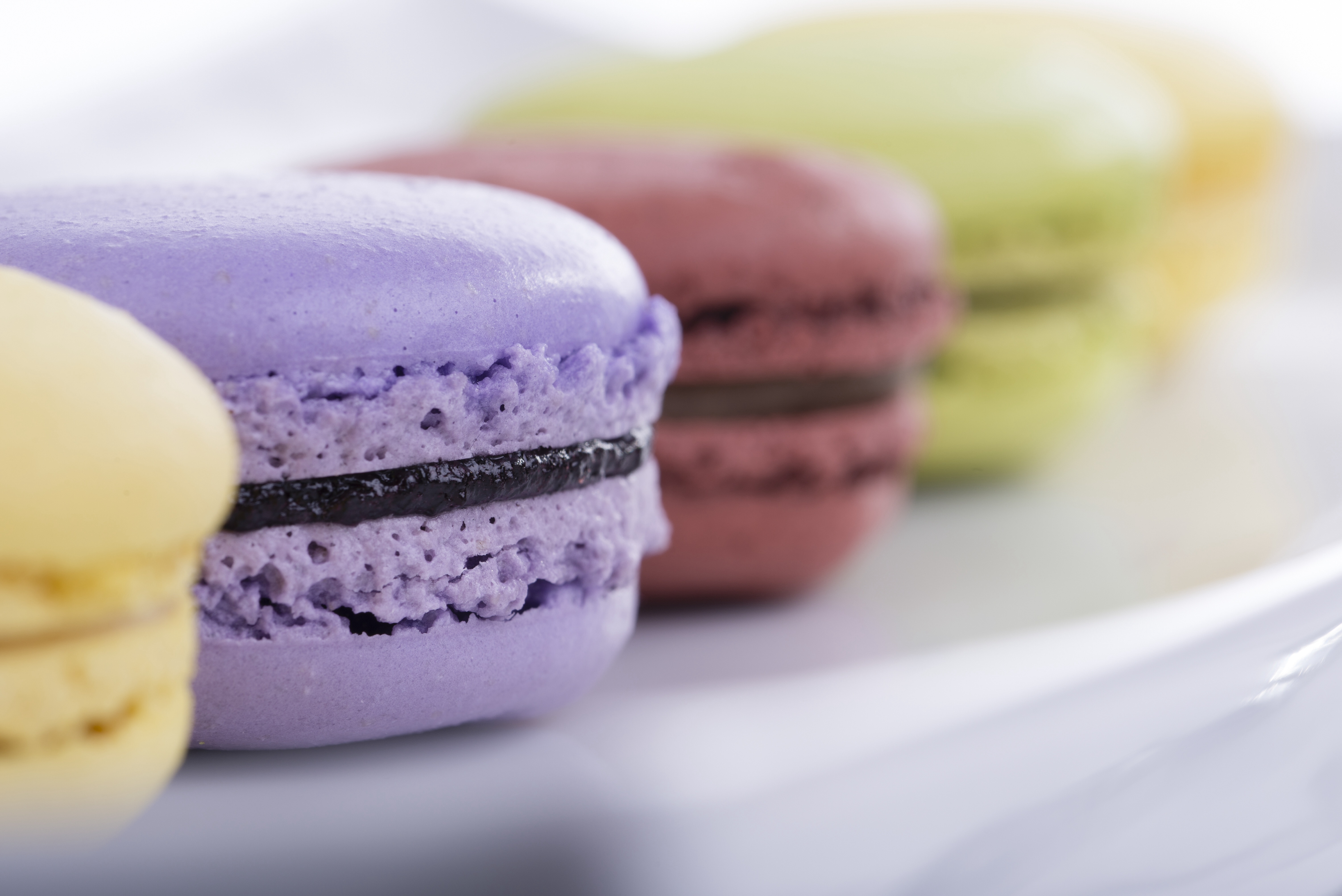
Macaron recipe
Macarons have been produced in the Venetian monasteries since the 8th century A.D. During the Renaissance, Catherine de' Medici's Italian pastry chefs made them when she brought them with her to France in 1533 upon marrying Henry II of France. Larousse Gastronomique cites the macaron was created in 1791 in a convent near Cormery. In 1792, macarons began to gain fame when two Carmelite nuns, seeking asylum in Nancy during the French Revolution, baked and sold the macaron cookies in order to pay for their housing. These nuns became known as the "Macaron Sisters". In these early stages, macarons were served without special flavors or fillings.
It was not until the 1830s that macarons began to be served two-by-two with the addition of jams, liqueurs, and spices. The macaron as it is known today, composed of two almond meringue discs filled with a layer of buttercream, jam, or ganache filling, was originally called the "Gerbet" or the "Paris macaron." Pierre Desfontaines of the French pâtisserie La durée has sometimes been credited with its creation in the early part of the 20th century, but another baker, Claude Gerbet, also claims to have invented it.
Now you can learn to make your own at home with this easy macaron recipe.
Ingredients
1 cup icing sugar
1 cup ground almonds
2 medium, free-range egg whites
Small pinch salt
¼ cup caster sugar
For the filling:
1 ½ cups unsalted butter, softened
2/3 cup icing sugar
Method
Macarons need a steady, lowish temperature to cook properly, too high, and they quickly burn, too little and they don't cook through. These temperatures are a guideline, adjust to suit your oven.
Preheat the oven to 140C/ 300F. Do not use a fan if possible but do not worry if you have no alternative, the results will still be good.
Sieve the icing sugar and ground almonds into a large mixing bowl. Throw any lumps left behind away. Mix the two together.
In a separate, scrupulously clean bowl whisk the egg whites and salt until they form soft peaks. Add the caster / fine sugar, a little at a time and continue to whisk until the whites are very thick and glossy (ideally, you should be able to hold the bowl upside down without the whites falling out - go on, I dare you !) Gently stir in the icing sugar and almond mix. The mixture will lose some air and become quite loose, don't worry, this is the way it should be.
Using a piping bag with a 1cm / 1/3" nozzle, fill with the macaron mixture. Place the silicon mat (see note in the introduction) or paper template onto a baking sheet. Pipe small blobs onto the sheet remembering that less is more at this stage because the mixture will settle and form into the allotted spaces.
Gently tap the baking sheet a few times on the work surface to help the macaron mixture to settle and to break any air bubbles, then leave to dry for 20 minutes - the surface of the macaron will become smooth and shiny.
Bake the macarons in the preheated for 7 - 8 minutes open the door to release any steam, close the oven door and cook for a further 7 - 8 minutes. The macarons are cooked when they feel firm and are slightly risen.
Slide the mat or greaseproof paper onto a wire cooling rack and leave to cool thoroughly. Do not be tempted to remove the macarons from the mat until they are cold or you will break them.
Make the filling
Beat the softened butter until it is fluffy, then gradually beat in the icing sugar. At this point you can add in any flavourings, you may choose. See examples below.
Place approx 1/2 a tsp of the filling to the flat side of one macaroon and sandwich together with another then twist ever so slightly to create a bond. Continue with the remaining macarons.
The macarons can be eaten immediately but will benefit from being refrigerated for 24 hours (that's if you can resist them for that long) as this will make them even more chewy and tasty.
Making Different Coloured Macarons
This is the basic recipe for macarons, and you can make coloured macarons by (sparingly) using a food colouring paste rather than liquid food colouring. The colour should be added to the egg whites before whisking.
Filling Variations for Macarons
For pink macarons: raspberry, strawberry are good matches, or for contrast add a little vanilla flavouring to the buttercream.
Green macarons work very well with a pistachio flavoured cream, use either food additive or finely ground, pistachio nuts.
Still green, add a little coconut, fresh lime zest and a tiny squeeze of the juice for a zingy filling.
Purple, blueberry flavor is perfect.
Cream coloured vanilla extract for an extra creamy taste.
Discover more French sensations with a Slow Tour of France